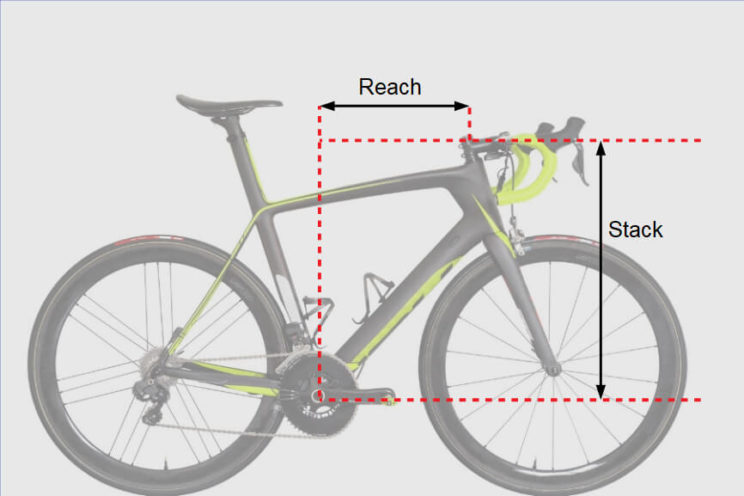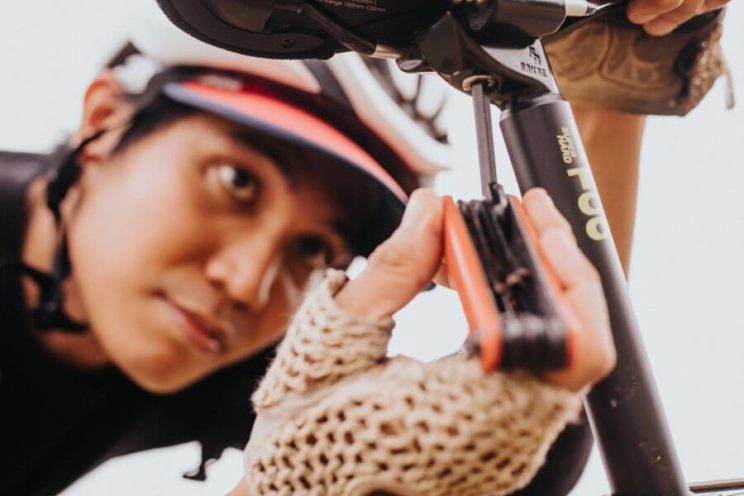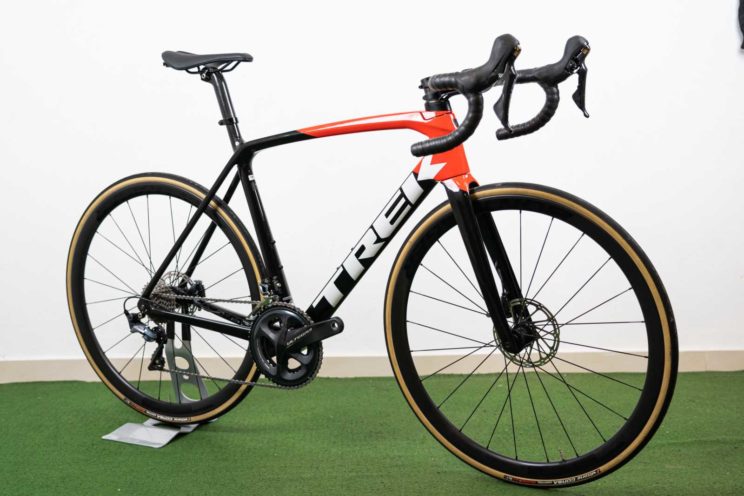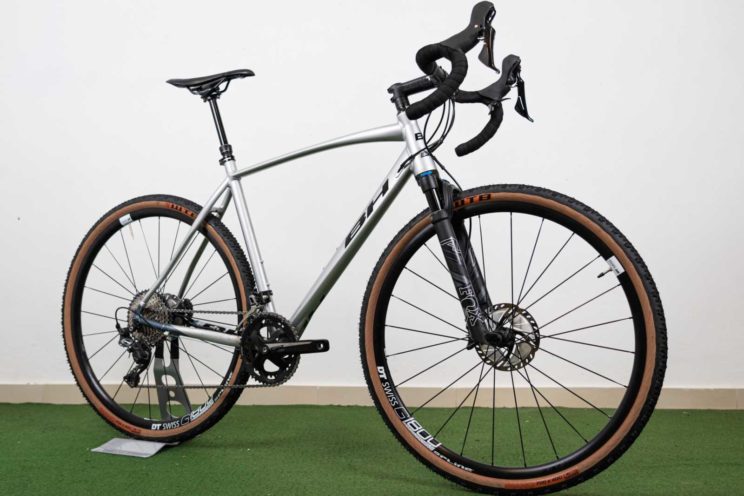Bicycle geometry refers to the measures and angles of your painting. Knowing how to interpret it will help you buy a bike well adapted to your conditions, but also to adjust what you already have and improve your behavior.
It is important to know the most relevant concepts of geometry. It will help you understand your bike to extract maximum performance from it. It will also be useful for
Adjust the measures of the different bicycle components depending on your body and your sports goals.
Bicycle geometry: key concepts
Much have changed the designs and measures of bicycles in recent decades. The paintings with straight and long tubes, as well as narrow handlebars, have been relegated to collector's pieces.
However, the paintings with
Sloping (Inclination of the upper tube), already popularized at the end of the nineties, the diameter changes in the MTB wheels, or the commitment to wider tires, have forced to manufacture pictures adapted to these market demands.
Each modality and type of bicycle has concrete geometry. A small variation of cm or degrees completely modify the behavior of the bike.
Therefore, there is now a type of picture for each cycling category. Even for each subcategory. The specialization is such that small details (a few centimeters or some degrees of inclination) completely modify the behavior of a bike.
However, taking into account the following key concepts of geometry, we can identify the characteristics of a given picture and its reactions when rolling with it.
1. Offset (fork advance)
We start with the front wheel, with the distance between the projected vertical of the center of the steering tube to the center of the front axle. It increases to reduce the
Trail or vice versa. It is a measure that influences the maneuverability of the front wheel. It is measured in mm.
2. Trail
It is related to progress. It is the distance from the projected vertical to the front of the front axle to the vertical projected to the floor of the steering tube, with the inclination of the angle of the latter. Increasing the
offset or advance, the
Trail and vice versa. A greater trail improves the stability of the bike at high speeds and reacts more quickly to the turns. It is a measure to take into account in the MTB.
3. Direction angle
The steering angle is one of the key concepts of the geometry of any bike. It refers to the inclination, expressed in degrees (º), of the steering tube with respect to the horizontal of the soil. As we have said, it is very important to know what behavior the bicycle has, determining the cyclist's posture and maneuverability, especially in the descents.
An angle of the large or closed direction (70 - 73º) grants the cyclist a more coupled pedaling posture towards the handlebar, improving the reactions in accelerations, ascent, etc. While a smaller launched favors an erect pedaling posture, gaining bike manageability and technical sections.
4. REACH (scope of the picture)
It is a measure, together with
Stack, which has gained much importance in modern bicycle pictures. Indicates whether a picture is longer or shorter than another with the same size, of the same brand or different.
He
REACH It is measured from the projected vertical of the center of the pedalier axis to the top of the steering pipe. The greater or lesser
REACH It influences the most upright or more coupled position, in relation to it
Stack o Height of the table.
Reach and Stack are geometry measurements that allude to the size of the painting.
5. Stack (box height)
Same as him
REACH, it is a measure to which to pay close attention when determining the behavior of the bike, in relation to other models with the same size. It is the height of the box, measured in mm from the center of the pedalier axis to the horizontal projected from the highest point of the steering pipe.

So much
REACH as
Stack They serve as more precise references when finding the ideal size of a bicycle, for a certain cyclist. Even more than traditional size in centimeters, inches or letters (S, M, L, etc).
In the following articles you have detail information about the
REACH and the
Stack. We invite you to take a look.
[IRP posts = "3919" name = "What are the Stack and Reach of a bicycle and why they are important"]
[IRP posts = "4290" name = "How to correctly measure the Stack and Reach of your Bicycle"]
6. Base or wheelbase
It is the reference distance to contemplate the length of the bike. It is measured from the front axle to the rear, in mm. Determine factors such as stability, management or agility. However, other measures such as
REACH, the angle of the direction or the
offset.
A bike with a larger base will be more stable with high speeds, but also less agile and slow reactions.
7. Sillin tube angle
[Captation Id = "Attachment_9361" Align = "Alignnone" Width = "744"]

(Image: captureow)[/caption]
The angle of the armchair is very important to know what posture will grant the cyclist. This is the inclination that the armchair has with respect to the horizontal soil, expressed in degrees (º). A large angle (from 72º to 76º) will favor a more agile and attack pedaling position, more suitable for increases. On the other hand, a minor one delays the position towards the rear wheel, favoring factors such as control, stability or balance.
[IRP Posts = "4183" Name = "How to know the right height to place the armchair of my bicycle"]
8. pod length
He
Chainny o Heat length defines the reactions of the rear of the bike. Actually, they end up marking the rest of the bike. It is measured from the center of the rear wheel axle to the center of the pedalier axle. How much short
Chainny longer.
Other measures of geometry
We have seen the most used concepts when talking about geometry. But there are other measures that, although of less importance, can be used to identify other characteristics of the painting.
The standing or height of the tube upper to the ground, the front center, the height of the pedalier to the ground, the fall of the pedalier or the length of the armchair tube influence aspects such as stability, the control of the bike at high speeds, the agility or the cyclist's position. Whenever you see the geometry file of a model, take note of these measures.
Geometries according to modality and behavior
To delve more in these concepts we present the different table models and their usual geometries by modality.
Road bicycles
Within the road, there are three subcategories of consolidated bicycles:
Climbers or classic
The steering angles grant a more aggressive or attack position to face strong slopes. The direction ranges between 71 and 73º and that of the armchair between 72 and 74º. In addition, the base wheel base tends to be shorter, with a compact pod length.
[CAPTION ID = "Attachment_8323" Align = "Alignnone" Width = "744"]

Trek Emonda, one of the 100% revised and certified climbers that you can find in Tuvalum.[/caption]
Big backyard
The fort of the great background is comfort and stability. They are bicycles more focused on cycotourism, or asphalt races in worse, cobblestone, etc. The angles are somewhat more relaxed. The address ranges between 69 and 71 and that of the armchair in 72 or 73º. The base on these bicycles is longer, with larger pods, in addition to a somewhat higher pedalier height.
Aero
Aerodynamic bicycles, linked to competition, enhance an aerodynamic or attack posture. Thus, the angles are very similar to those of the climbers. Only in this case we are facing longer axles bicycles and with a lower pedalier height.
They are aspects that enhance the aerodynamics and stability of the bike at high speeds. Likewise, the direction pipe is usually larger and more stylized. Conditions that imply rigidity and lower wind resistance.
Mountain Bike
Let's also analyze its geometry depending on the mode practiced.
Cross country
In the current XC the mixture of geometry models is constant. Thus, the rigid (with front suspension) tend to present more aggressive angles for an attack position. In double suspension, on the other hand, the direction angle - for example - tends to relax more, up to 68 ° or less, if we talk about the incipient Down Country. But in all of them there are common characteristics: very short pods (430 mm), combined with
REACH Length and length of the smallin tube than in the trail or enduro.
Trail and enduro
In the most radical modalities of the MTB the paintings
They twist Its geometry seeking to extend the base to the maximum and launching the direction angle, seeking control and management. The latter decline of 67º. As for the rear train, the pods are usually 1 to 2 cm longer, although in the last models they want to maintain as compact as possible to allow a certain agility in the pedaling.
Decline
In the DH the angle of the direction reaches its maximum launch, up to 63º, to admit a greater suspension route (200 mm) while the handlebar management is enhanced. Likewise, the wheelbase increases considerably with respect to trail and enduro, up to 15 cm more with respect to an XC.
Gravel and Ciclocross
They are two similar types of bicycle, but with different purposes, which makes two different models of geometry. The angles in one of Ciclocross resemble those of a road climbing, but with an accused pedalier height.
On the other hand, the Gravians are based on a great background geometry with some variations. They have longer pods that increase wheel passage (for wider tires) and a somewhat more relaxed steering angle on models with front suspension.
[CAPTION ID = "Attachment_8325" Align = "Alignnone" Width = "744"]

BH Serla X, one of the Serla bikes put on sale in Tuvalum.[/caption]
Changes in geometry: basic and advanced (flip-chips)
With changes
basic In the geometry we refer to the simple modifications that the cyclist itself can perform to change the behavior of the bike. Install a shorter or longer power, raise the height of the handlebar, the armchair ... or even change the suspension fork for one of more travel.
With the
advanced, however, we talk about technologies or solutions to change, in part or completely, the scheme of bicycle geometry.
The Flip-chips They are technologies included in several MTB models, usually of mid -range and high range.
Technologies such as
Flip-chips They are increasingly common in the MTB paintings. They are caps or screws located at the turn of the rear triangle. When turning their head, they modify the inclination or length of pods or straps, modifying measures and angles. Brands such as Santa Cruz, Specialized or Trek have been offering these systems for some time, which seek to obtain two bikes in one.
On the other hand, brands such as Scott have taken advantage of the suspension settings to modify the position of the painting and, with it, its geometry. Also, Scott (in its spark model) has a technology similar to
Flip-chips in the address game to modify the angle of the same 0.5 or 1.
In addition, component brands such as Canek offer management games with two -position washers, to also vary the direction angle in compatible pictures.
Conclusion: The geometry factor, key to knowing your bike

As we have seen, the measures and angles of the painting play a fundamental role in the behavior of the bike, almost at the same level or more than the components. Or the materials of the painting.
If you are looking for a bicycle, new or second -hand, we encourage you to check the file with the geometry data of each model. Thus you can compare what qualities enhances each model depending on the type of table. You will get clues to resolve issues about position, size and other factors to roll with comfort and security.
 So much REACH as Stack They serve as more precise references when finding the ideal size of a bicycle, for a certain cyclist. Even more than traditional size in centimeters, inches or letters (S, M, L, etc).
In the following articles you have detail information about the REACH and the Stack. We invite you to take a look.
[IRP posts = "3919" name = "What are the Stack and Reach of a bicycle and why they are important"]
[IRP posts = "4290" name = "How to correctly measure the Stack and Reach of your Bicycle"]
So much REACH as Stack They serve as more precise references when finding the ideal size of a bicycle, for a certain cyclist. Even more than traditional size in centimeters, inches or letters (S, M, L, etc).
In the following articles you have detail information about the REACH and the Stack. We invite you to take a look.
[IRP posts = "3919" name = "What are the Stack and Reach of a bicycle and why they are important"]
[IRP posts = "4290" name = "How to correctly measure the Stack and Reach of your Bicycle"]
 (Image: captureow)[/caption]
The angle of the armchair is very important to know what posture will grant the cyclist. This is the inclination that the armchair has with respect to the horizontal soil, expressed in degrees (º). A large angle (from 72º to 76º) will favor a more agile and attack pedaling position, more suitable for increases. On the other hand, a minor one delays the position towards the rear wheel, favoring factors such as control, stability or balance.
[IRP Posts = "4183" Name = "How to know the right height to place the armchair of my bicycle"]
(Image: captureow)[/caption]
The angle of the armchair is very important to know what posture will grant the cyclist. This is the inclination that the armchair has with respect to the horizontal soil, expressed in degrees (º). A large angle (from 72º to 76º) will favor a more agile and attack pedaling position, more suitable for increases. On the other hand, a minor one delays the position towards the rear wheel, favoring factors such as control, stability or balance.
[IRP Posts = "4183" Name = "How to know the right height to place the armchair of my bicycle"]
 Trek Emonda, one of the 100% revised and certified climbers that you can find in Tuvalum.[/caption]
Big backyard
The fort of the great background is comfort and stability. They are bicycles more focused on cycotourism, or asphalt races in worse, cobblestone, etc. The angles are somewhat more relaxed. The address ranges between 69 and 71 and that of the armchair in 72 or 73º. The base on these bicycles is longer, with larger pods, in addition to a somewhat higher pedalier height.
Aero
Aerodynamic bicycles, linked to competition, enhance an aerodynamic or attack posture. Thus, the angles are very similar to those of the climbers. Only in this case we are facing longer axles bicycles and with a lower pedalier height.
They are aspects that enhance the aerodynamics and stability of the bike at high speeds. Likewise, the direction pipe is usually larger and more stylized. Conditions that imply rigidity and lower wind resistance.
Trek Emonda, one of the 100% revised and certified climbers that you can find in Tuvalum.[/caption]
Big backyard
The fort of the great background is comfort and stability. They are bicycles more focused on cycotourism, or asphalt races in worse, cobblestone, etc. The angles are somewhat more relaxed. The address ranges between 69 and 71 and that of the armchair in 72 or 73º. The base on these bicycles is longer, with larger pods, in addition to a somewhat higher pedalier height.
Aero
Aerodynamic bicycles, linked to competition, enhance an aerodynamic or attack posture. Thus, the angles are very similar to those of the climbers. Only in this case we are facing longer axles bicycles and with a lower pedalier height.
They are aspects that enhance the aerodynamics and stability of the bike at high speeds. Likewise, the direction pipe is usually larger and more stylized. Conditions that imply rigidity and lower wind resistance.
 BH Serla X, one of the Serla bikes put on sale in Tuvalum.[/caption]
BH Serla X, one of the Serla bikes put on sale in Tuvalum.[/caption]
 As we have seen, the measures and angles of the painting play a fundamental role in the behavior of the bike, almost at the same level or more than the components. Or the materials of the painting.
If you are looking for a bicycle, new or second -hand, we encourage you to check the file with the geometry data of each model. Thus you can compare what qualities enhances each model depending on the type of table. You will get clues to resolve issues about position, size and other factors to roll with comfort and security.
As we have seen, the measures and angles of the painting play a fundamental role in the behavior of the bike, almost at the same level or more than the components. Or the materials of the painting.
If you are looking for a bicycle, new or second -hand, we encourage you to check the file with the geometry data of each model. Thus you can compare what qualities enhances each model depending on the type of table. You will get clues to resolve issues about position, size and other factors to roll with comfort and security.












